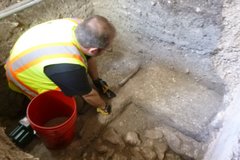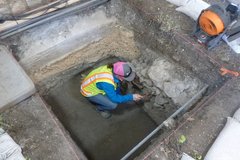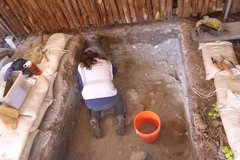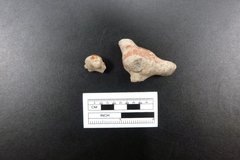Excavations continued in EUs 1, 3, and 5 throughout the week. Artifact processing also continued in the lab.
In EU-1 the maximum depth reached was 110 cm below surface. During the week a compacted lime surface was encountered, and archaeologists continue to expose this feature. Limestone cobbles were present throughout the unit and could be indicative of construction fill. The quantity of artifacts has decreased as archaeologists dig deeper. Recovered artifacts include lithics and ceramics.
The maximum depth reached in EU-3 was 120 cm below surface. Archaeologists have reached intact clay loam. Artifact densities have decreased drastically. There is a noticeable increased in natural chert and snail shell, suggesting levels predating occupation of the site will soon be encountered. No features were encountered this week.






